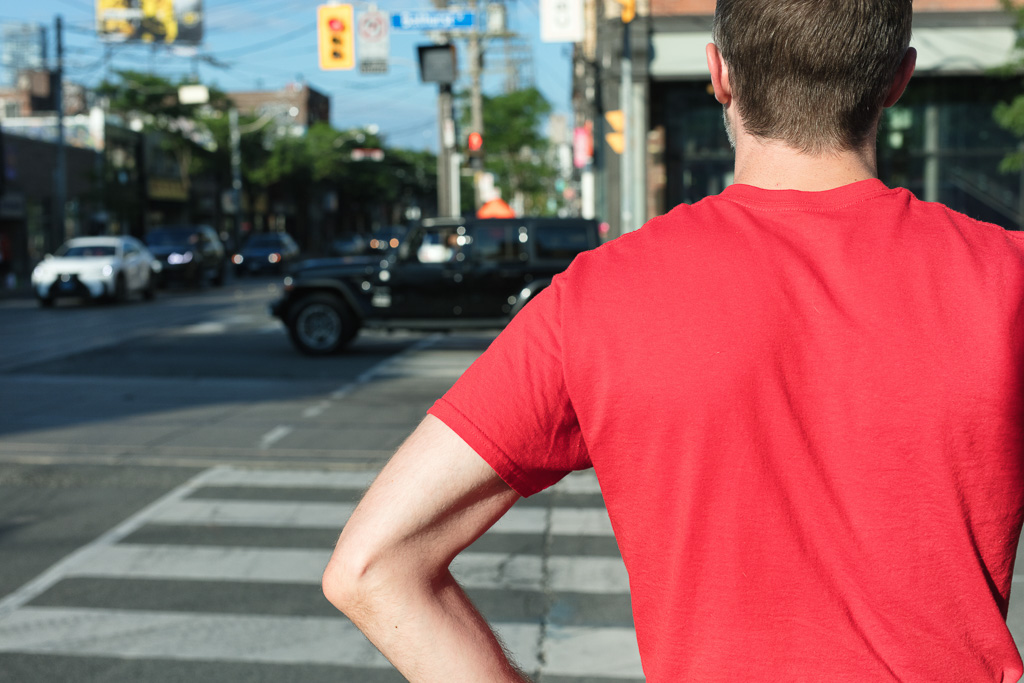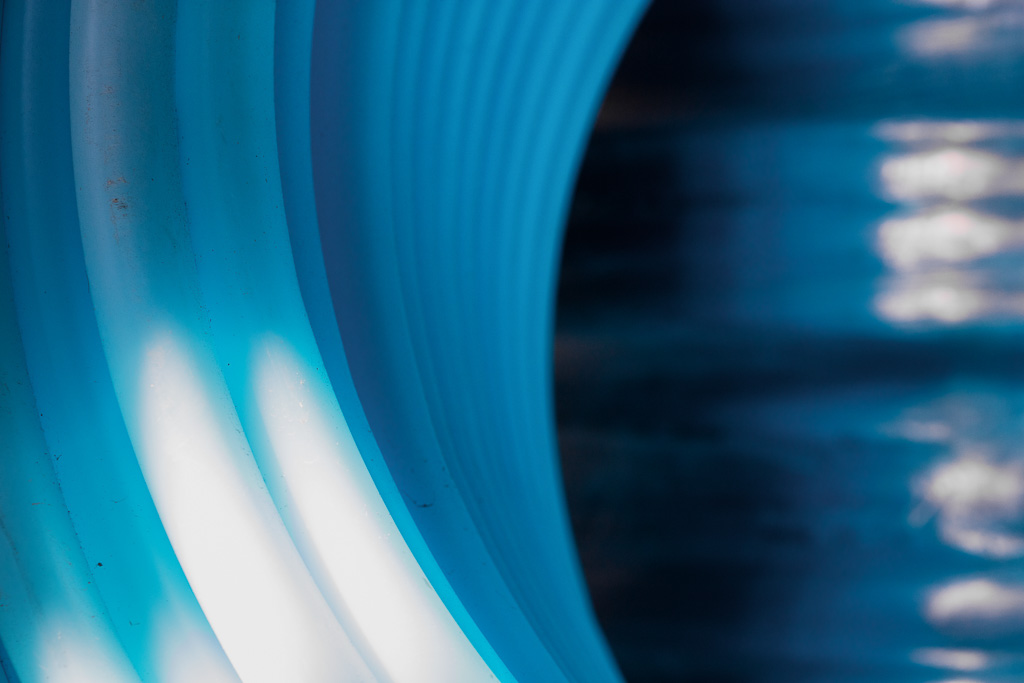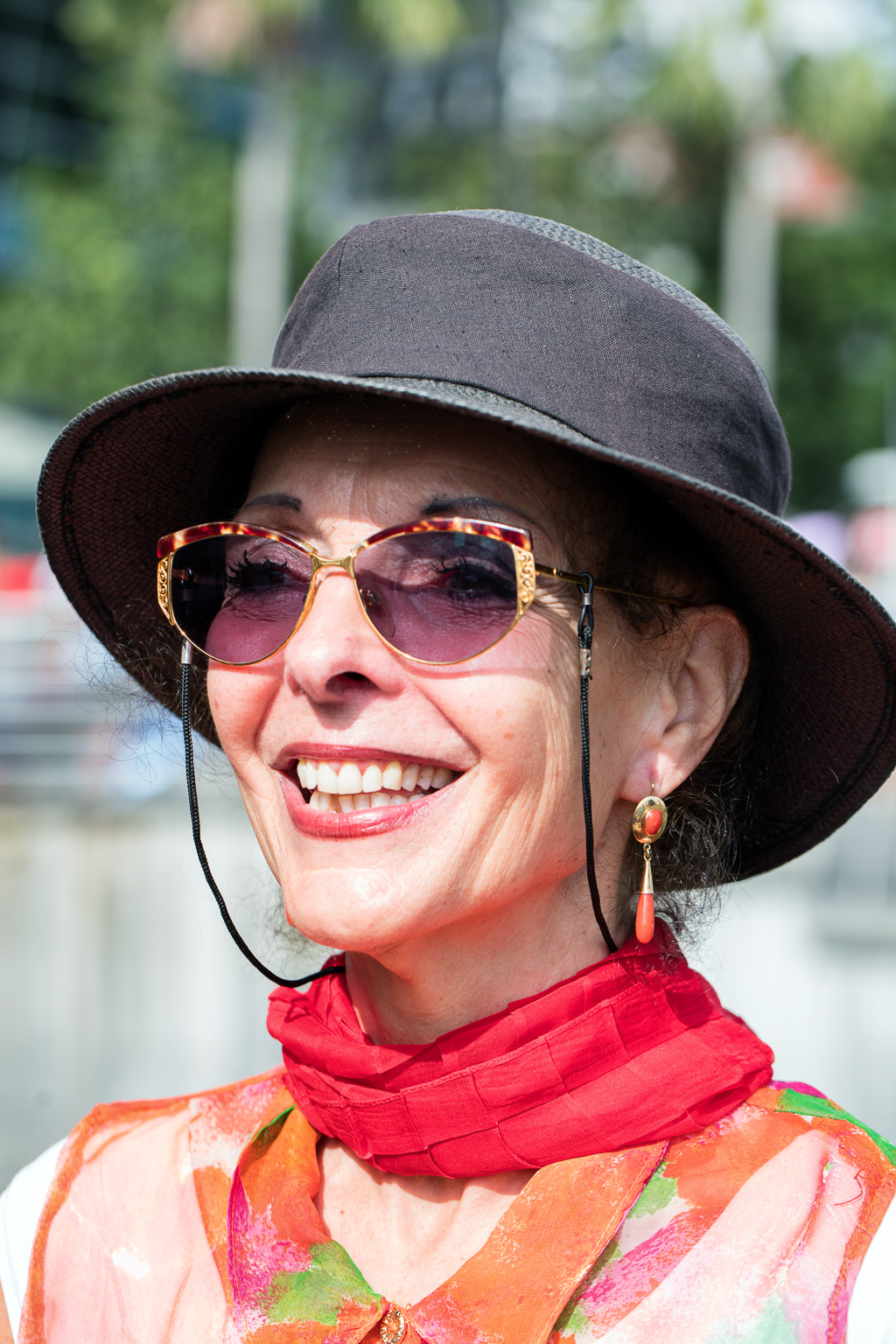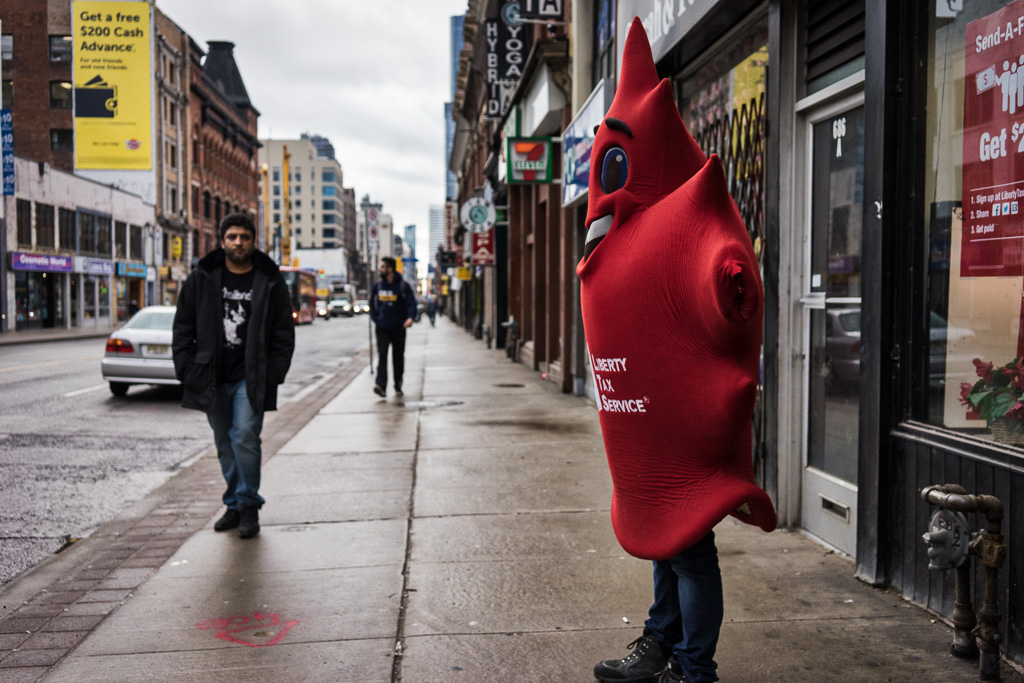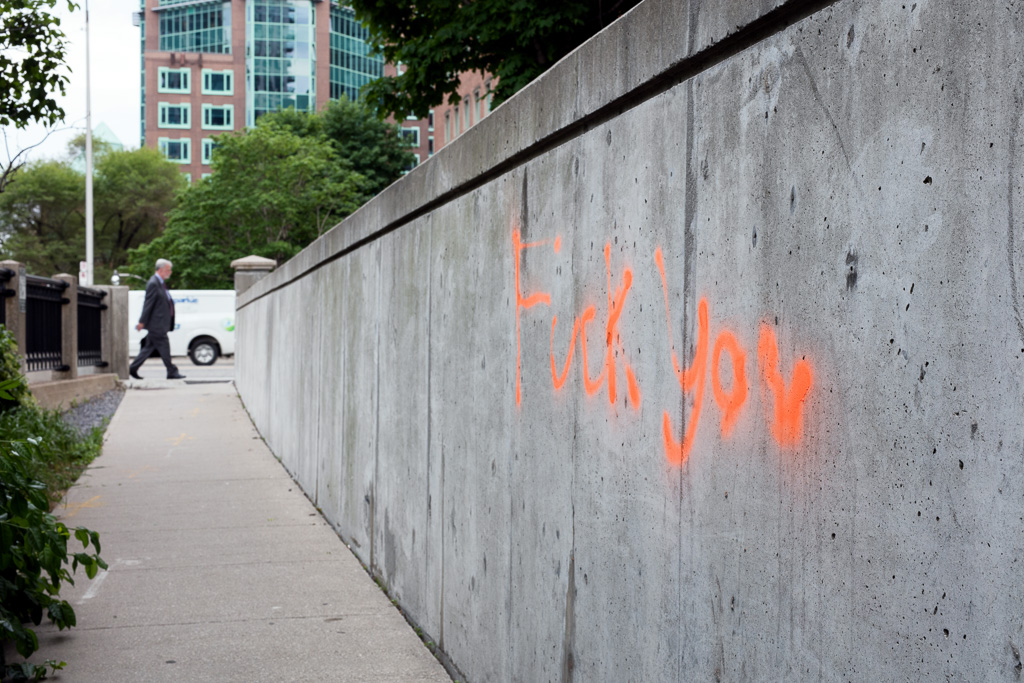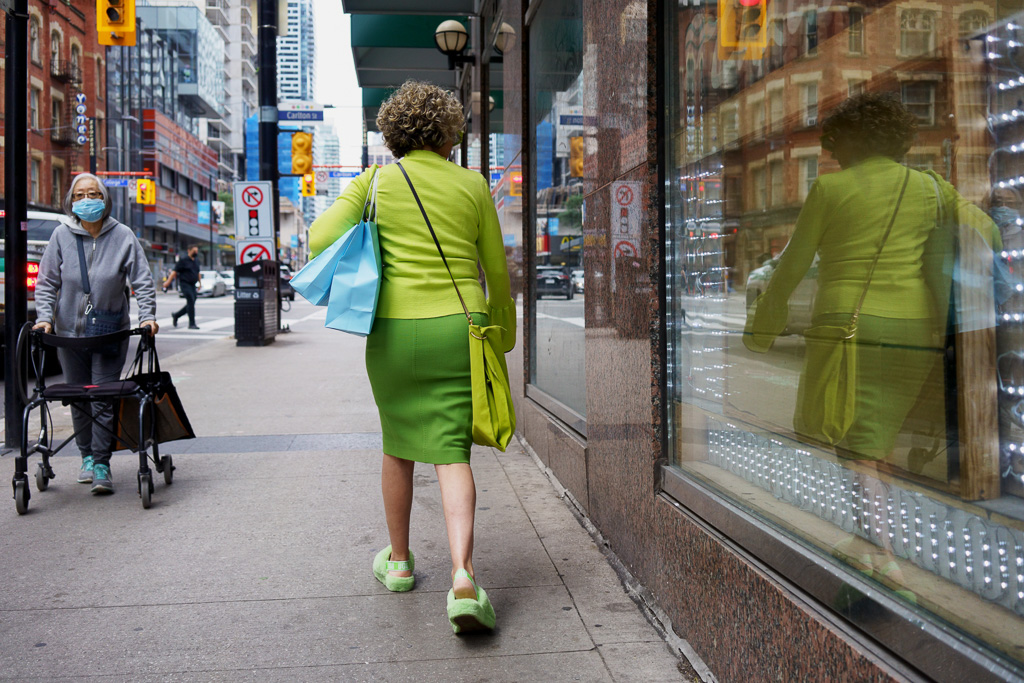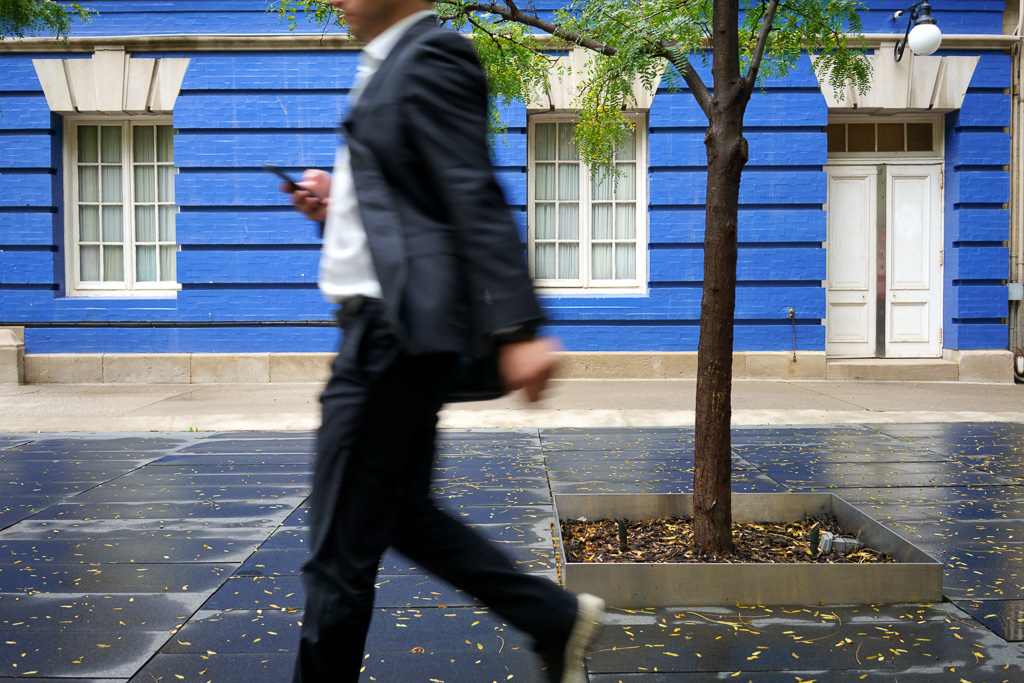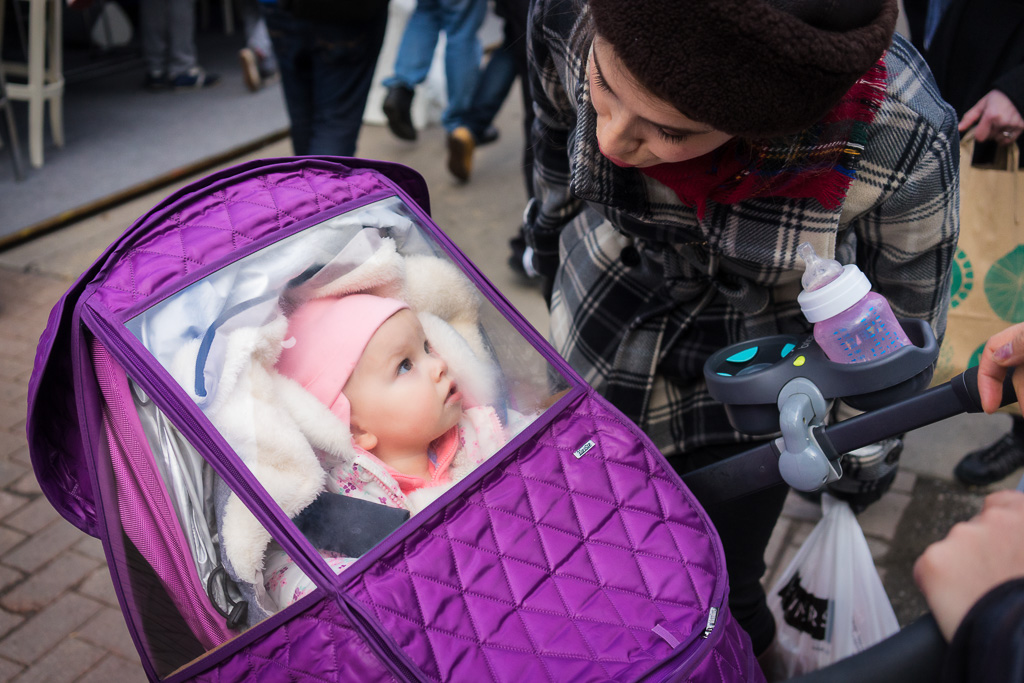I offer this post as a counterpoint to yesterday’s post in which I seemed to be saying that I prefer candid photos of people doing stuff. Today, I celebrate candid photos of people not doing stuff. In particular, I offer a photo of a man wearing a red T-shirt and waiting at a crosswalk. In the immortal words of Walt Whitman:
Do I contradict myself? Very well then I contradict myself, (I am large, I photograph multitudes.)
Well, maybe he didn’t say those exact words, but he said something close to those words, and I take them as permission to be human instead of consistent.
I want to share this photograph because I like the way the red T-shirt creates a single block of colour that dominates the image. And I like the way the left arm juts out at an angle that matches the angle of the crosswalk line. Finally, I like the way the late afternoon light washes the image in a yellow that shifts the blue just a little to green; it gives the image a faintly nostalgic feeling as if I had shot it with film. However, the image doesn’t show a person doing something. Nobody is doing anything. The man is just standing there, waiting.
What I love most about photography is the opportunities it gives me to embrace inconsistency, contradiction, and paradox. Introductory photo workshops will sometimes take a rule-based approach to making a good photograph: apply the rule of thirds, the golden-mean, remember foreground, middle-ground, background, visual tricks that more or less guarantee a decent result. Then there are the personal rules I impose on myself, like the rule of yesterday’s post: only shoot people when they are doing something.
The challenge of a rule-based approach is that, in a world where AI is reaching a critical mass, there’s little we can do in terms of image-making that an algorithm can’t do better. Our only advantage is our capacity for irrationality. Intuition, holy unreason, the embrace of irreconcilables. These are things we do with ease that would short-circuit a microchip. Increasingly, I think we will find that our most successful creative work ignores those rules that are reducible to algorithms.
